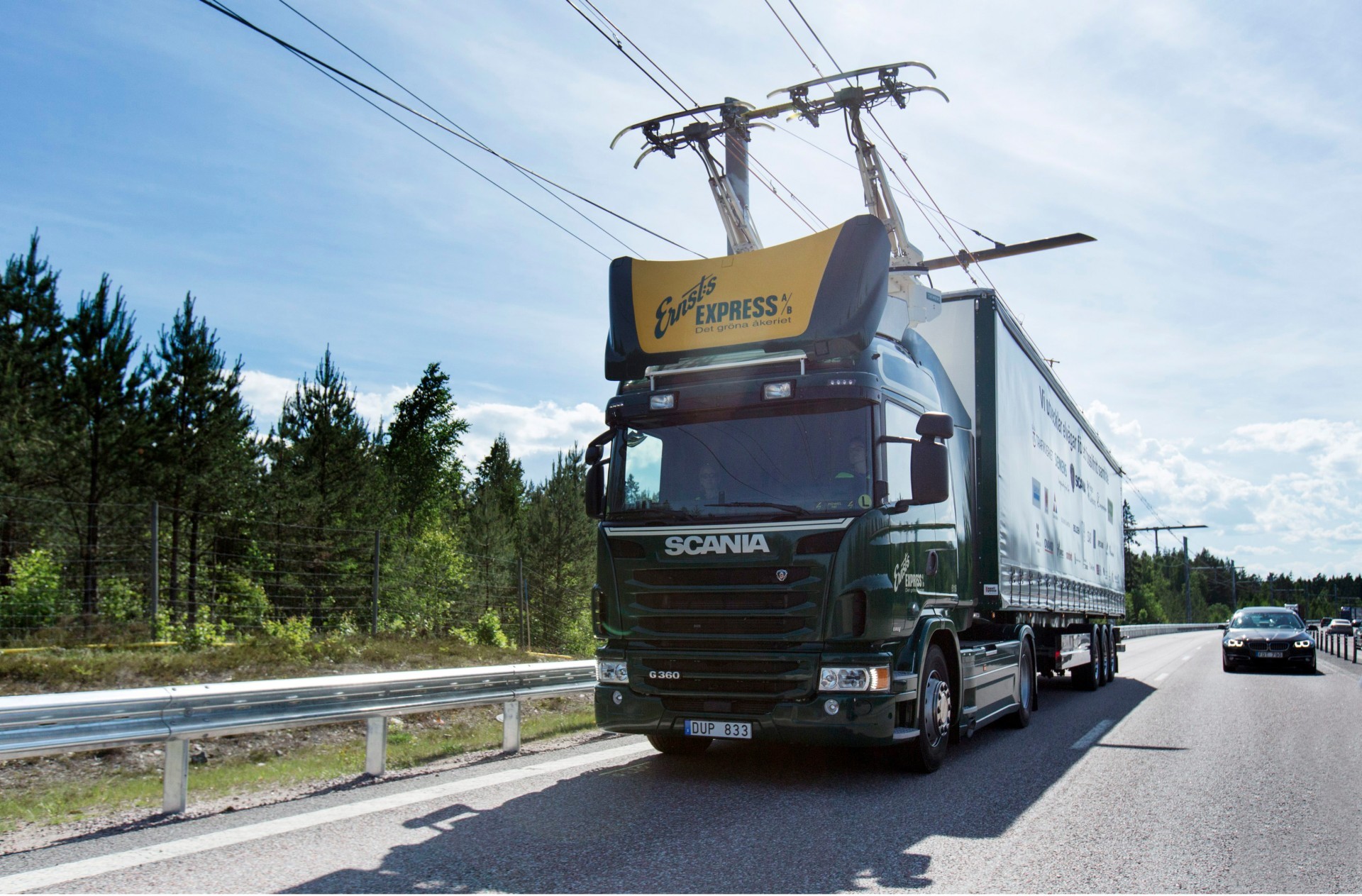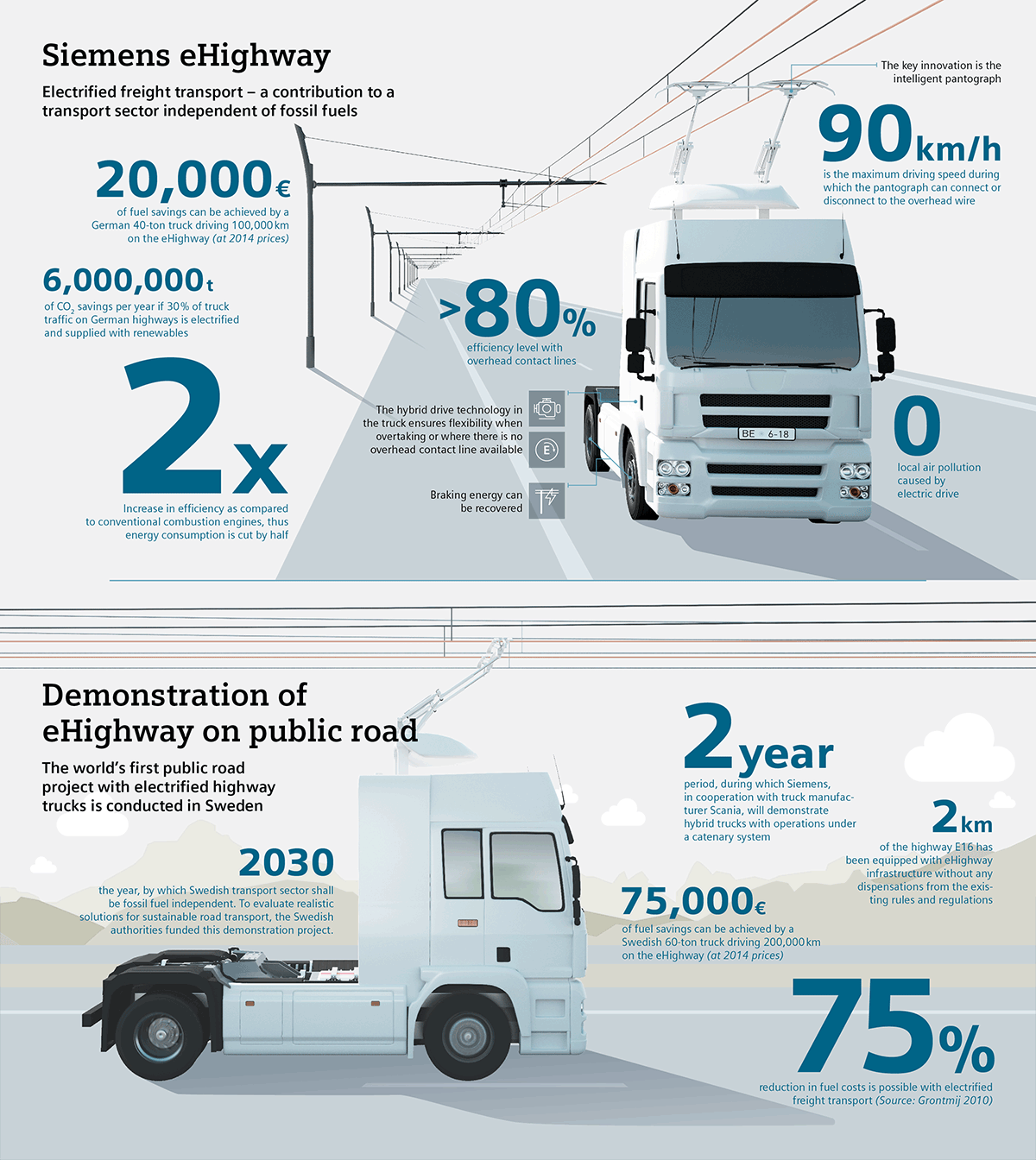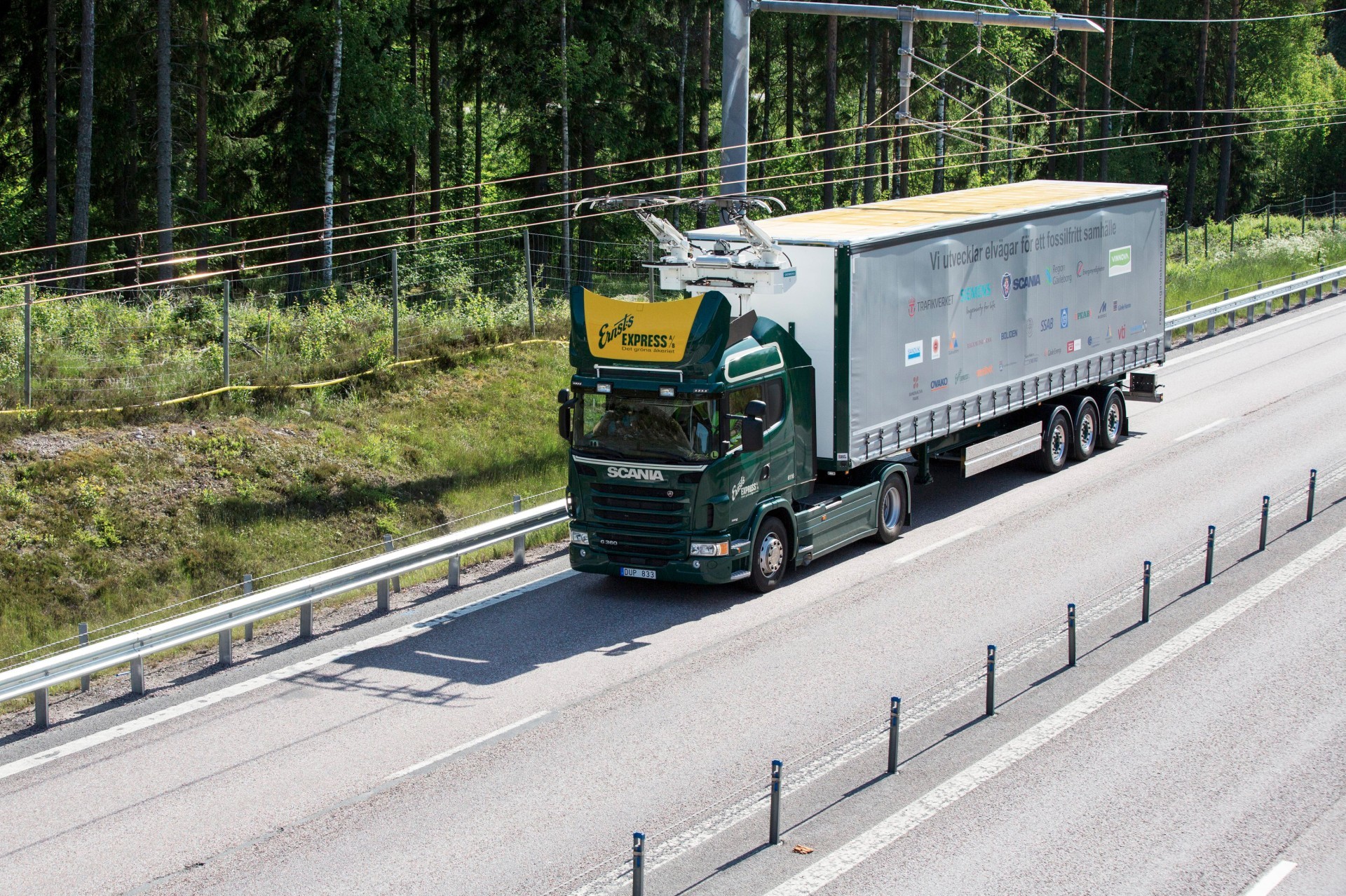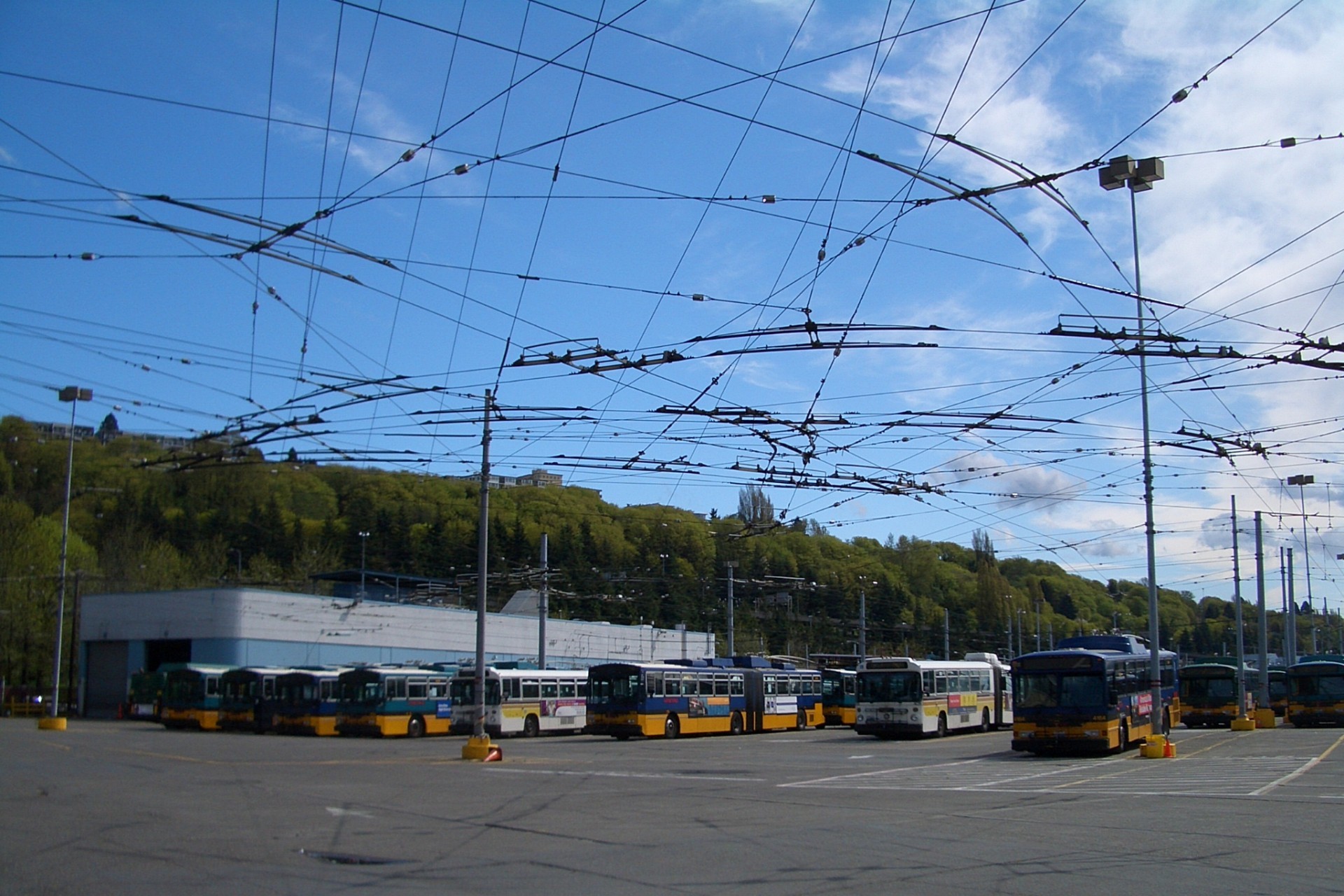Sweden opened a 2 km long electric highway for trucks

Photo: Scania CV AB
Sweden became the first country in the world to begin experiencing high-speed electric highways for heavy vehicles.
Unlike the American company Nikola Motor, which develops conceptually new truck-mounted tractors , the Swedes have chosen a simpler and more practical way. They extended a multi-wire contact network, which transfers electricity from traction substations to machine engines. According to this principle, urban trolley buses work.
')
A two-kilometer experimental contact network segment was opened on the E16 highway near the city of Gavle, north of Stockholm.
In the tests of the “electric highway” eHighway, Scania’s heavy trucks with hybrid propulsion systems are involved.
In the presence of a contact network, Scania trucks switch to power supply and disable standard diesel engines. If the network is unavailable or there is no voltage in it, the engine is turned back on.
Technological design of contact network equipment and trucks was developed jointly by Siemens and Scania. According to Siemens, when powering a vehicle, efficiency per kilometer increases almost twice (by more than 80%). So, when driving a 60-ton truck at a distance of 200,000 km, the hypothetical savings from using the contact network is 75,000 euros (in 2014 prices), which fully pays for the cost of upgrading the truck and other associated costs.

Infographics: Scania CV AB
The maximum speed of the truck on the contact network is 90 km / h.
The use of electric motors also allows the recovery of braking energy, which also slightly improves efficiency. This is an added advantage, as well as the environmental benefits of reducing noise and reducing atmospheric pollution by exhaust gases.

Photo: Scania CV AB
According to the Swedish authorities, this demonstration should show that by 2030 the transport sector in Sweden can achieve its goal and stop using fossil fuels. Now road transport in Sweden generates about a third of all carbon dioxide emissions into the atmosphere, so government plans can significantly improve the environment. Of course, provided that the rest of the world also reduces greenhouse gas emissions by a third.
Tests on the two-kilometer electrified section of the highway will last two years. After that, it will be decided whether to apply the technology on other highways.
In addition to Sweden, a similar experiment of the “electric highway” eHighway is being prepared in California with the assistance of Siemens and Volvo.
Probably, it makes sense to lay the contact network only along major highways. If you try to hold it absolutely on all roads, then this can lead to confusion.

Contact network in Seattle's trolleybus park
Source: https://habr.com/ru/post/395589/
All Articles